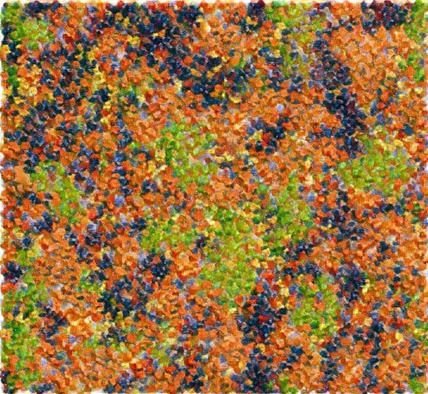当前位置:
X-MOL 学术
›
ChemSusChem
›
论文详情
Our official English website, www.x-mol.net, welcomes your feedback! (Note: you will need to create a separate account there.)
Molecular-Level Overhaul of γ-Aminopropyl Aminosilicone/Triethylene Glycol Post-Combustion CO2 -Capture Solvents.
ChemSusChem ( IF 8.4 ) Pub Date : 2020-05-05 , DOI: 10.1002/cssc.202000724 David C Cantu 1, 2 , Deepika Malhotra 3 , Manh-Thuong Nguyen 1 , Phillip K Koech 3 , Difan Zhang 1 , Vassiliki-Alexandra Glezakou 1 , Roger Rousseau 1 , Jordan Page 3 , Richard Zheng 3 , Robert J Perry 4 , David J Heldebrant 3, 5
ChemSusChem ( IF 8.4 ) Pub Date : 2020-05-05 , DOI: 10.1002/cssc.202000724 David C Cantu 1, 2 , Deepika Malhotra 3 , Manh-Thuong Nguyen 1 , Phillip K Koech 3 , Difan Zhang 1 , Vassiliki-Alexandra Glezakou 1 , Roger Rousseau 1 , Jordan Page 3 , Richard Zheng 3 , Robert J Perry 4 , David J Heldebrant 3, 5
Affiliation

|
Capturing carbon dioxide from post‐combustion gas streams is an energy‐intensive process that is required prior to either converting or sequestering CO2. Although a few commercial 1st and 2nd generation aqueous amine technologies have been proposed, the cost of capturing CO2 with these technologies remains high. One approach to decrease costs of capture has been the development of water‐lean solvents that aim to increase efficiency by reducing the water content in solution. Water‐lean solvents, such as γ‐aminopropyl aminosilicone/triethylene glycol (GAP/TEG), are promising technologies, with the potential to halve the parasitic load to a coal‐fired power plant, albeit only if high solution viscosities and hydrolysis of the siloxane moieties can be mitigated. This study concerns an integrated multidisciplinary approach to overhaul the GAP/TEG solvent system at the molecular level to mitigate hydrolysis while also reducing viscosity. Cosolvents and diluents are found to have negligible effects on viscosity and are not needed. This finding allows for the design of single‐component siloxane‐free diamine derivatives with site‐specific incorporation of selective chemical moieties for direct placement and orientation of hydrogen bonding to reduce viscosity. Ultimately, these new formulations are less susceptible to hydrolysis and exhibit up to a 98 % reduction in viscosity compared to the initial GAP/TEG formulation.
中文翻译:

γ-氨丙基氨基硅酮/三乙二醇燃烧后CO2捕获溶剂的分子水平检修。
从燃烧后气流中捕获二氧化碳是一个能源密集型过程,在转换或封存CO 2之前需要进行此过程。尽管已经提出了一些商业的第一代和第二代含水胺技术,但是捕集CO 2的成本这些技术仍然很高。降低捕集成本的一种方法是开发贫水溶剂,其目的是通过减少溶液中的水含量来提高效率。诸如γ-氨丙基氨基硅氧烷/三乙二醇(GAP / TEG)之类的水稀溶剂是很有前途的技术,尽管只有在高溶液粘度和水解的情况下,才能将燃煤电厂的寄生负荷减半。硅氧烷部分可以减轻。这项研究涉及在分子水平上对GAP / TEG溶剂体系进行大修的综合多学科方法,以减轻水解并降低粘度。发现助溶剂和稀释剂对粘度的影响可忽略不计,因此不需要。这一发现可以设计出单组分不含硅氧烷的二胺衍生物,并在特定位置结合选择性化学部分,以直接放置和定向氢键以降低粘度。最终,与最初的GAP / TEG配方相比,这些新配方不易水解,粘度降低高达98%。
更新日期:2020-07-07
中文翻译:

γ-氨丙基氨基硅酮/三乙二醇燃烧后CO2捕获溶剂的分子水平检修。
从燃烧后气流中捕获二氧化碳是一个能源密集型过程,在转换或封存CO 2之前需要进行此过程。尽管已经提出了一些商业的第一代和第二代含水胺技术,但是捕集CO 2的成本这些技术仍然很高。降低捕集成本的一种方法是开发贫水溶剂,其目的是通过减少溶液中的水含量来提高效率。诸如γ-氨丙基氨基硅氧烷/三乙二醇(GAP / TEG)之类的水稀溶剂是很有前途的技术,尽管只有在高溶液粘度和水解的情况下,才能将燃煤电厂的寄生负荷减半。硅氧烷部分可以减轻。这项研究涉及在分子水平上对GAP / TEG溶剂体系进行大修的综合多学科方法,以减轻水解并降低粘度。发现助溶剂和稀释剂对粘度的影响可忽略不计,因此不需要。这一发现可以设计出单组分不含硅氧烷的二胺衍生物,并在特定位置结合选择性化学部分,以直接放置和定向氢键以降低粘度。最终,与最初的GAP / TEG配方相比,这些新配方不易水解,粘度降低高达98%。


























 京公网安备 11010802027423号
京公网安备 11010802027423号